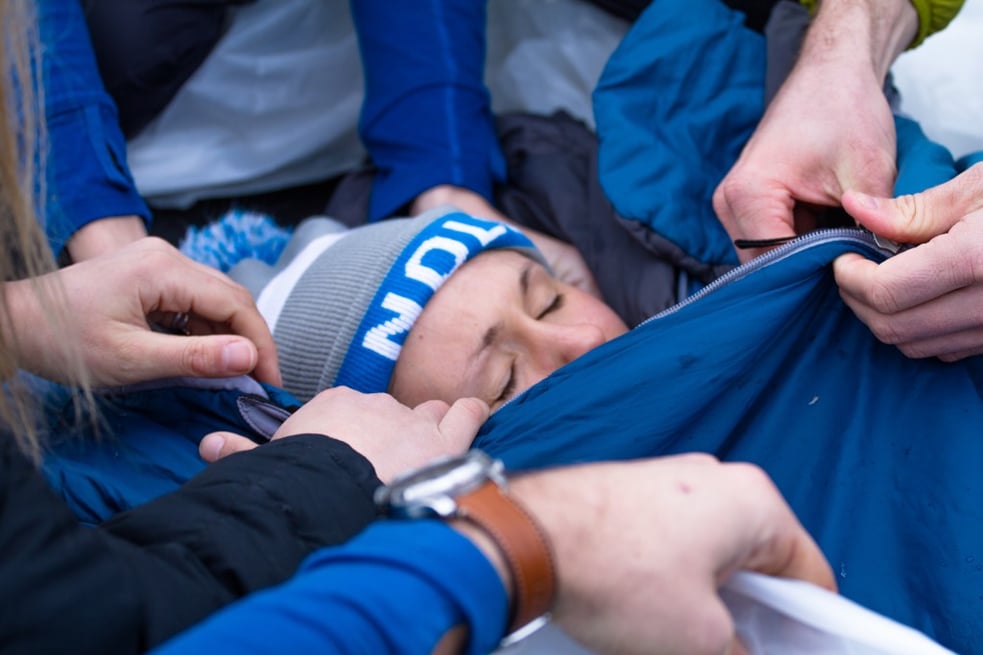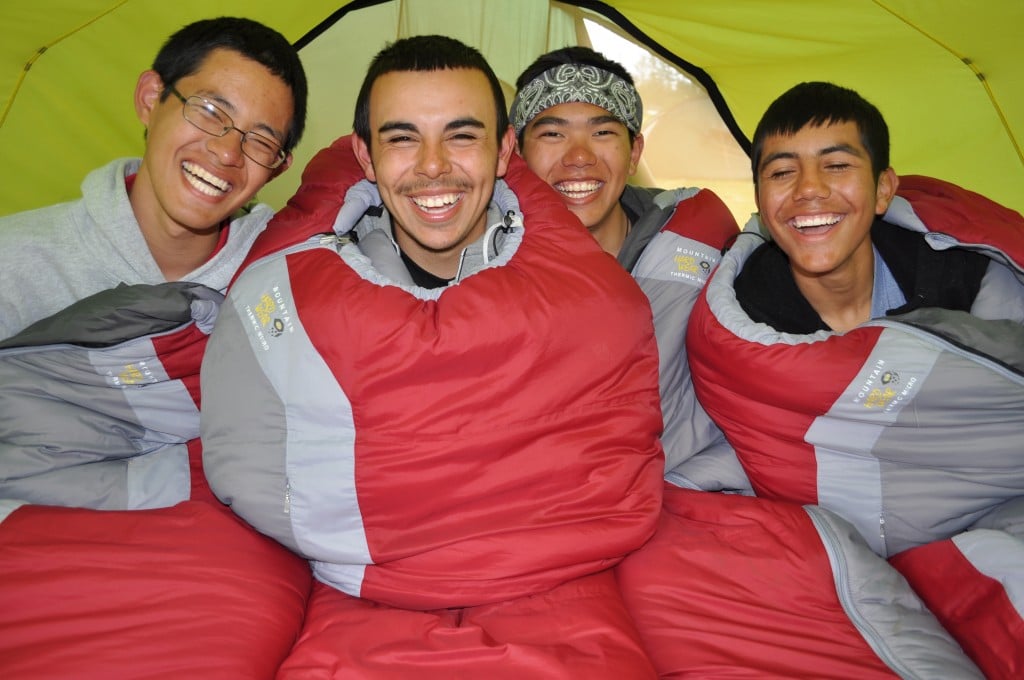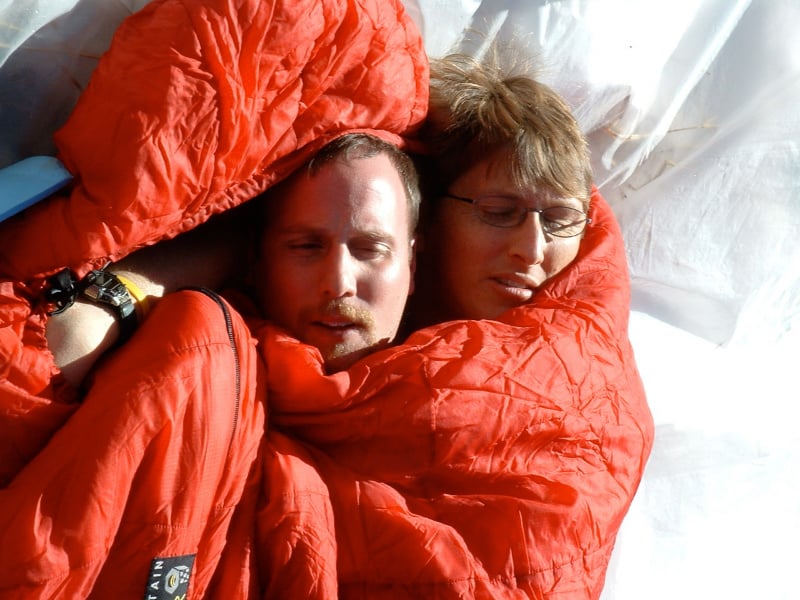If you read the medical literature on hypothermia, it’s common to see a threshold for hypothermia at 95°F (35°C). The best I can figure is that this norm was described by British researchers in the 1960s.
 How to treat a hypothermic patient: shelter, insulation from the cold, and warm, sugary drinks are a good start. Photo by Kirk Rasmussen.
How to treat a hypothermic patient: shelter, insulation from the cold, and warm, sugary drinks are a good start. Photo by Kirk Rasmussen.
It’s all fine and dandy for researchers or medical personnel with access to advanced life support to set a temperature threshold, but it’s not the world in which Wilderness First Responders and EMTs manage hypothermia. We don’t work in rescue helicopters or emergency rooms with physicians, nurses, and the benefits of medical technology, or inside a controlled physiology laboratory. We have to manage cold people in the wilderness.
Our ability to measure the temperature of a cold person outside the hospital is so inexact that we usually forgo the attempt. We need to recognize hypothermia from subtle, early clues, such as an impaired ability to perform complex tasks, fine motor shivering, apathy, confused and sluggish thinking, slurred speech, and "the umbles" (stumbling, mumbling, bumbling, fumbling, grumbling). We strive to recognize hypothermia early because we know it’s so much easier to stay warm than it is to warm a cold person.
Our definition of hypothermia is loose. We call people hypothermic who are probably only stressed by the cold or are cold and unhappy. Their temperature is likely only down a degree or two, if at all.
It doesn’t matter that our hypothermic patient’s temperature may be higher than the clinical definition. It’s not important in the field to know the patient’s temperature. What’s important is to be aware of your physical state and vigilant of how your companions are faring in the cold. What’s important is acting early and aggressively to stay warm, rather than needing to warm a cold person.
We can treat this early stage of hypothermia, these cold-stressed people, in the wilderness. A hypothermia wrap, a good meal and some warm fluids often are just what the doctor ordered. What we can’t afford to miss, because it’s much harder to manage in the field, is real hypothermia.
Written By
Tod Schimelpfenig
As a NOLS Instructor since 1973 and a WEMT, volunteer EMT on ambulance and search and rescue squads since the 70s, Tod Schimelpfenig has extensive experience with wilderness risk management. He has used this valuable experience to conduct safety reviews as well as serve as the NOLS Risk Management Director for eight years, the NOLS Rocky Mountain Director for six years, and three years on the board of directors of the Wilderness Medical Society, where he received the WMS Warren Bowman Award for lifetime contribution to the field of wilderness medicine. Tod is the founder of the Wilderness Risk Manager’s Committee, has spoken at numerous conferences on pre-hospital and wilderness medicine, including the Australian National Conference on Risk Management in Outdoor Recreation, and has taught wilderness medicine around the world. He has written numerous articles on educational program, risk management and wilderness medicine topics, and currently reviews articles for the Journal of Wilderness and Environmental Medicine. Additionally, he is the author of NOLS Wilderness Medicine and co-author of Risk Management for Outdoor Leaders, as well as multiple articles regarding wilderness medicine. Tod is the retired curriculum director for NOLS Wilderness Medicine and is an active wilderness medicine instructor





